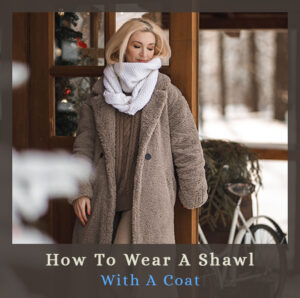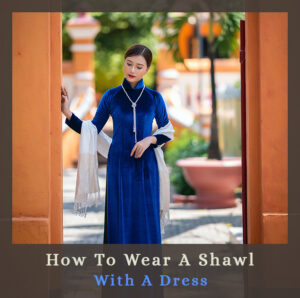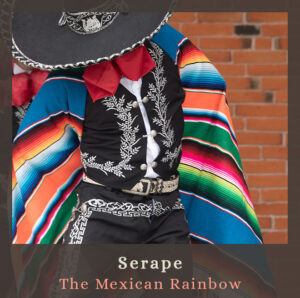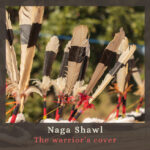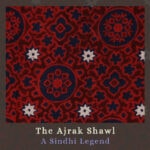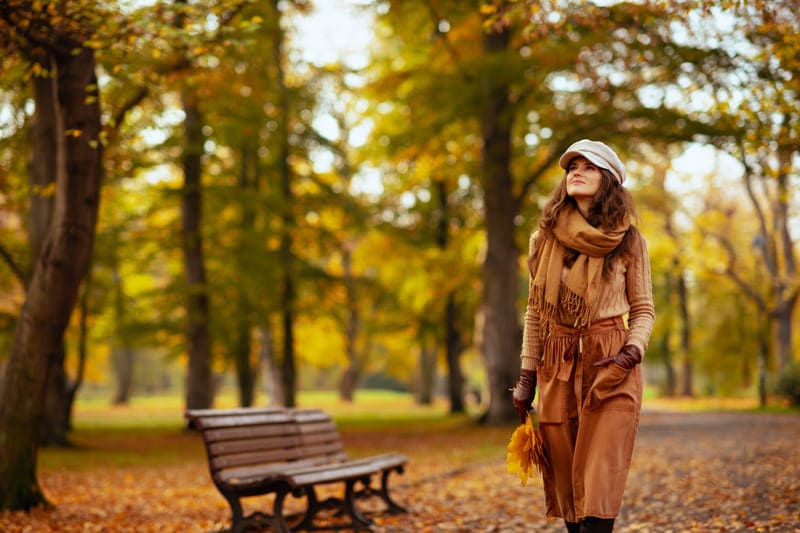Shawls are the ultimate garment for both women and men, they were created originally as an extra layer of warm fabric for extreme cold weather, but they became a staple fashion accessory that can style up any outfit.
We, as fashion designers and long-time travelers, absolutely love and appreciate shawls! So let’s start our shawl journey by answering some popular questions:
What is a shawl?
A shawl is a versatile garment, it’s a type of cloth that is commonly worn over the shoulders and draped around the body. It can be made from a variety of materials, including wool, silk, cotton, and synthetic fibers.
Shawls come in endless forms and designs, they can be plain or patterned, and they’re often decorated with embroidery, beadwork, or other embellishments. They can be worn as a fashion accessory, for warmth, as part of traditional outfits, or as a religious garment in certain cultures.
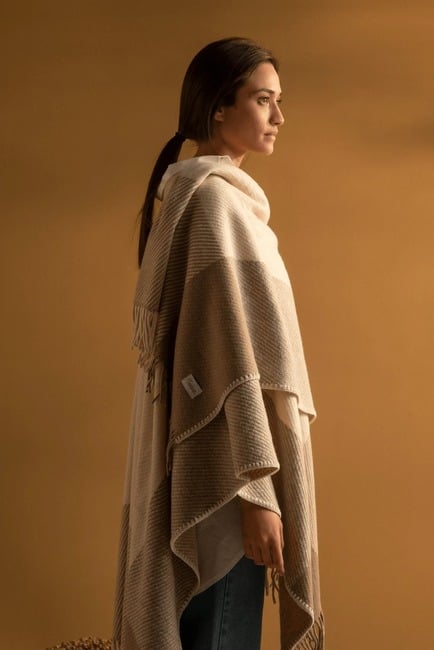
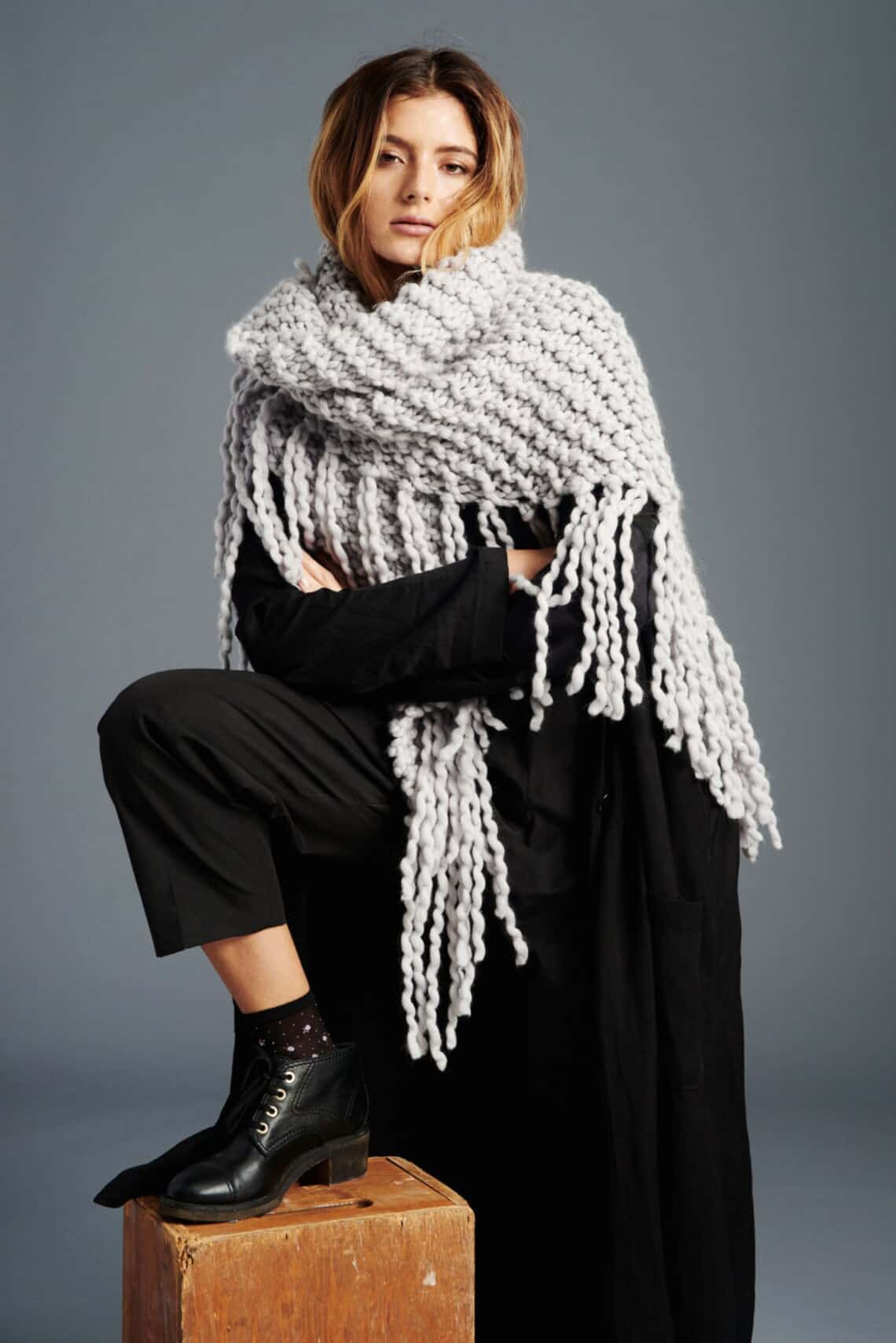
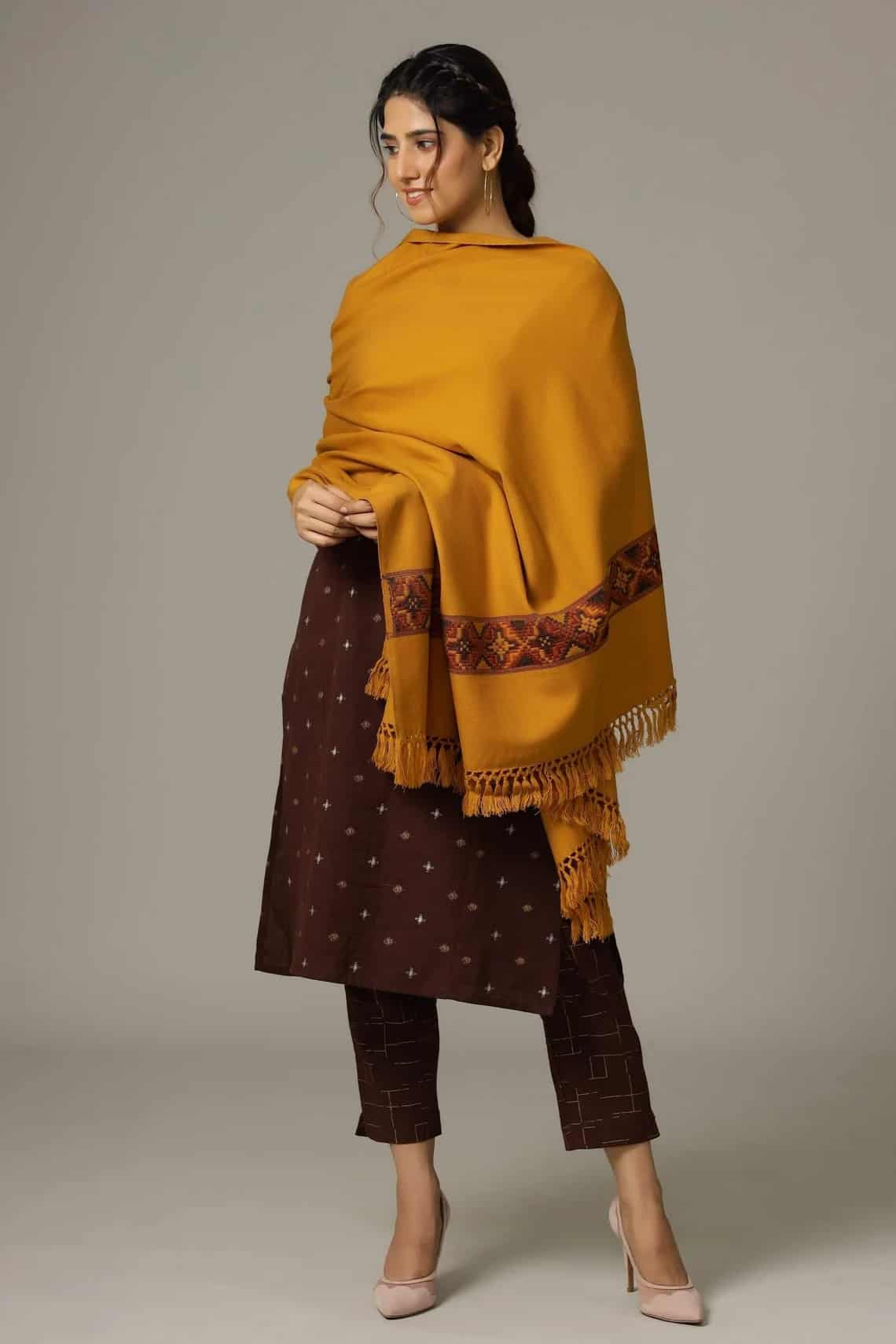
Outlined Merino Wool Ruana shawls by Feebra (Etsy)
Chunky merino fringe shawl by Loopy Mango (Etsy)
Embroidered Kullu Shawl by Ravaiyaa (Etsy)
What is unique about shawls?
Shawls are one of the oldest forms of clothing in the world, dating back to ancient times. They are super versatile and stylish accessories that can be worn in many different ways, making them a popular choice for both women and men. From lightweight summer shawls to thick woolen winter shawls, there are so many different types to choose from, each with its own unique characteristics and history.
Kings of versatility
One of the unique features of shawls is their versatility. They can be worn in many different ways, depending on the occasion and the wearer’s personal style.
Shawls can be draped over the shoulders, wrapped around the body, or tied in various ways to create different looks and styles. They are magnificent fashion accessories whose designs are updated every season.
Another unique aspect of shawls is their cultural significance. Many cultures around the world have their own traditional styles of shawls, which are often worn as a symbol of heritage, status, or religious association.
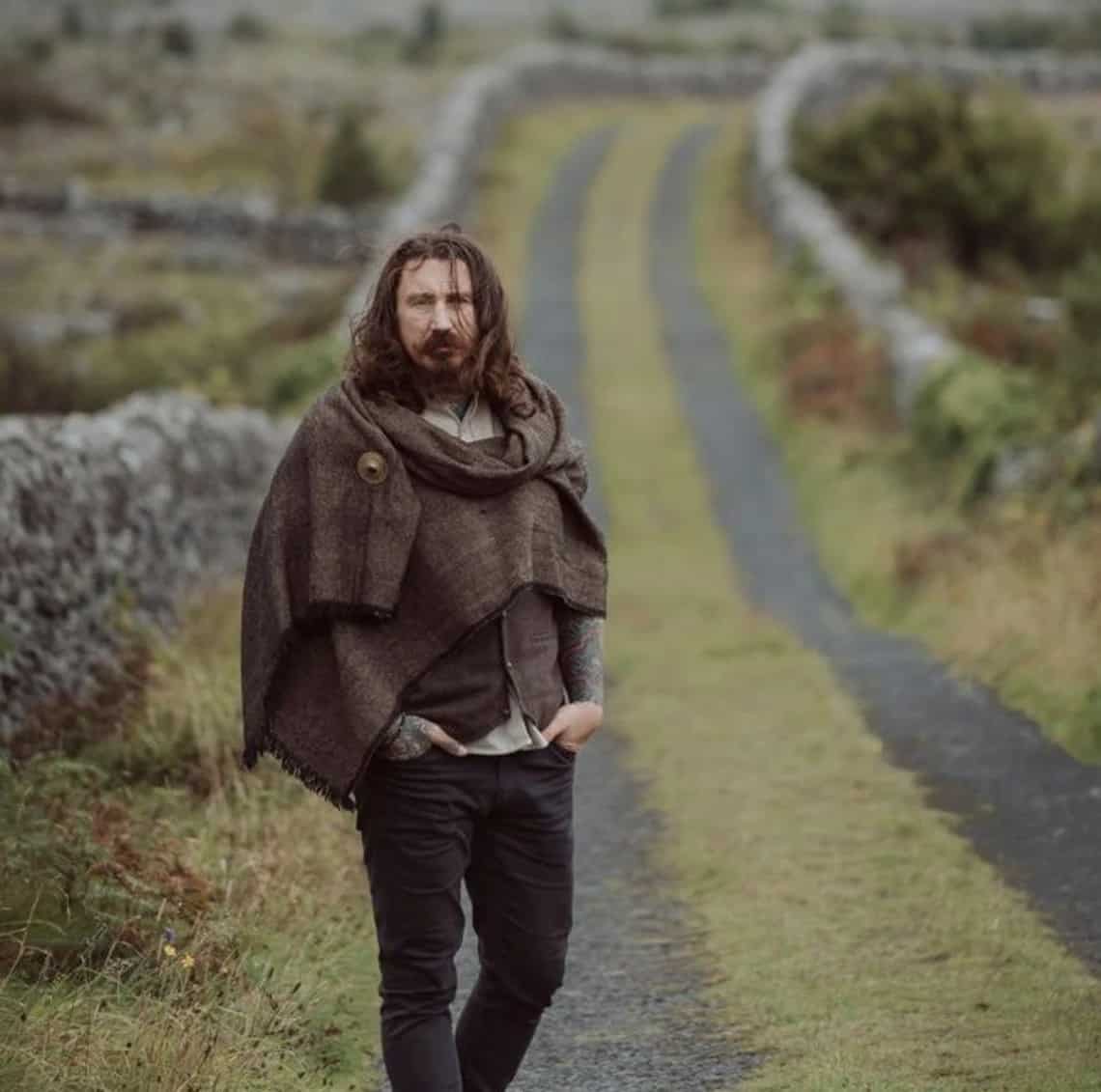
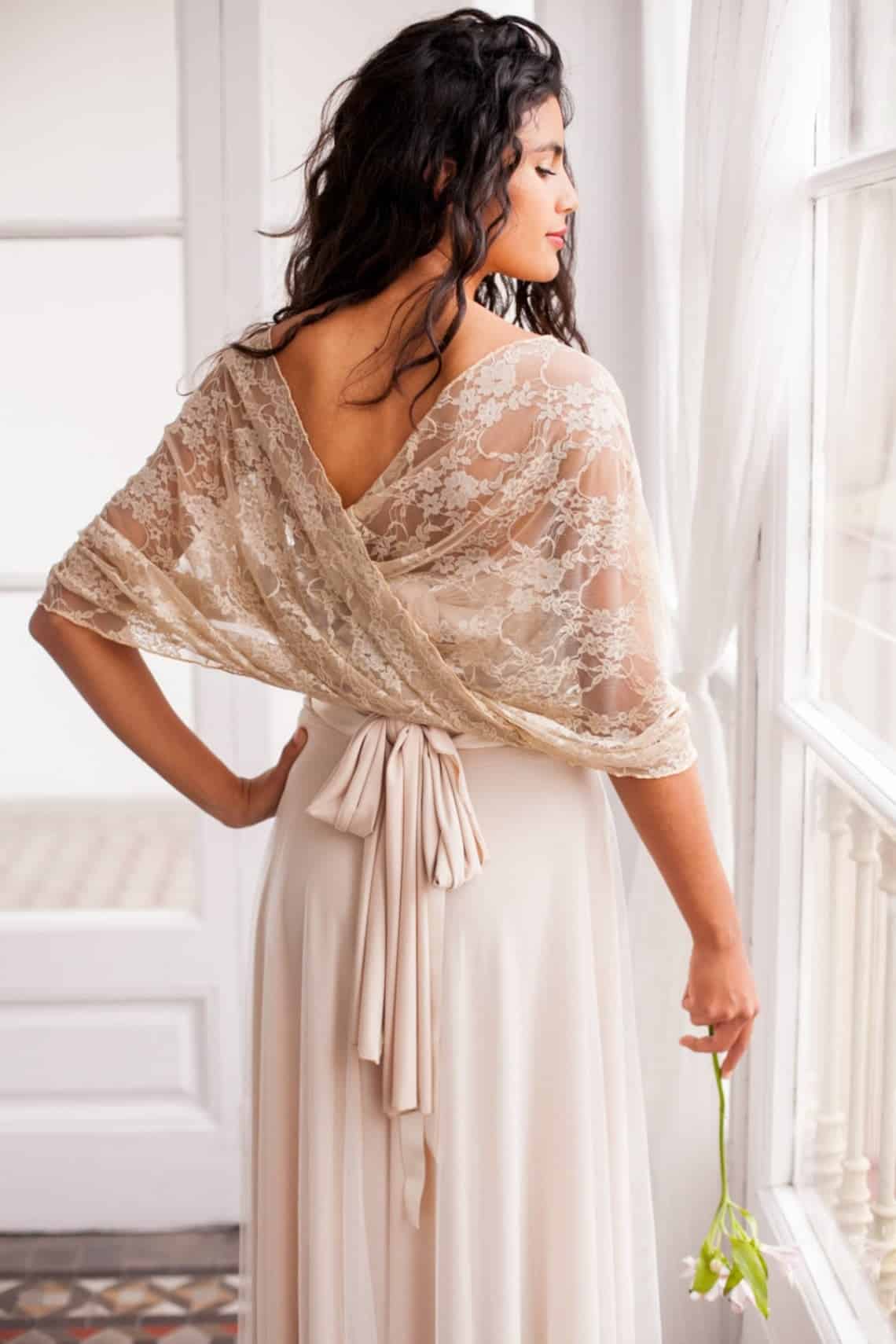

Celtic Shawl w. Sun Disc Brooch by Celtic Fusion Design (Etsy)
Lace Wedding Shrug Shawl by mimetik (Etsy)
Hand-Woven Pure Kani Pashmina Shawl by AngadCreations (Etsy)
How to Wear a Shawl?
As we mentioned, there are many different ways to wear a shawl, depending on the occasion and your personal style. Some of the most common ways to wear a shawl include draping it over the shoulders and letting it hang down the back (like the traditional Indian women wear it), wrapping it around the body, tying it at the front or side, or wrapping it around the neck like a scarf. Shawls can also be used as headscarves, belts, or even as a decorative accessories for bags or hats.
It really depends on the look you want to achieve and the shawl you have.
Here are a few ideas to give you some inspiration:
Shawl vs. Scarf – what’s the difference?
While shawls and scarves are similar in many ways, they are also distinct from each other. Shawls are typically larger than scarves and can be worn over the shoulders or draped around the body. Scarves, on the other hand, are smaller and are worn around the neck. The size of the shawl makes it much more versatile than the scarf – you can use a shawl as a scarf, but you can’t really use a scarf as a shawl! However, in the west, many people are not so familiar with the word ‘shawl’. It is definitely aren’t as popular as its brother, the scarf! Therefore, you might see shawls being named in a whole variety of different names, such as blanket scarf, oversized scarf, stole, wrap, and many more!
How are shawls made?
The production process involves spinning the fibers into yarn, weaving or knitting the yarn into fabric, and finishing the fabric with any necessary treatments, such as dyeing or printing.
In some cases, shawls are also decorated with embroidery, beading, or other embellishments. Each and every step of the process can be done by hand (like with pashmina shawls or other authentic ethnic shawls) or using machine techniques.
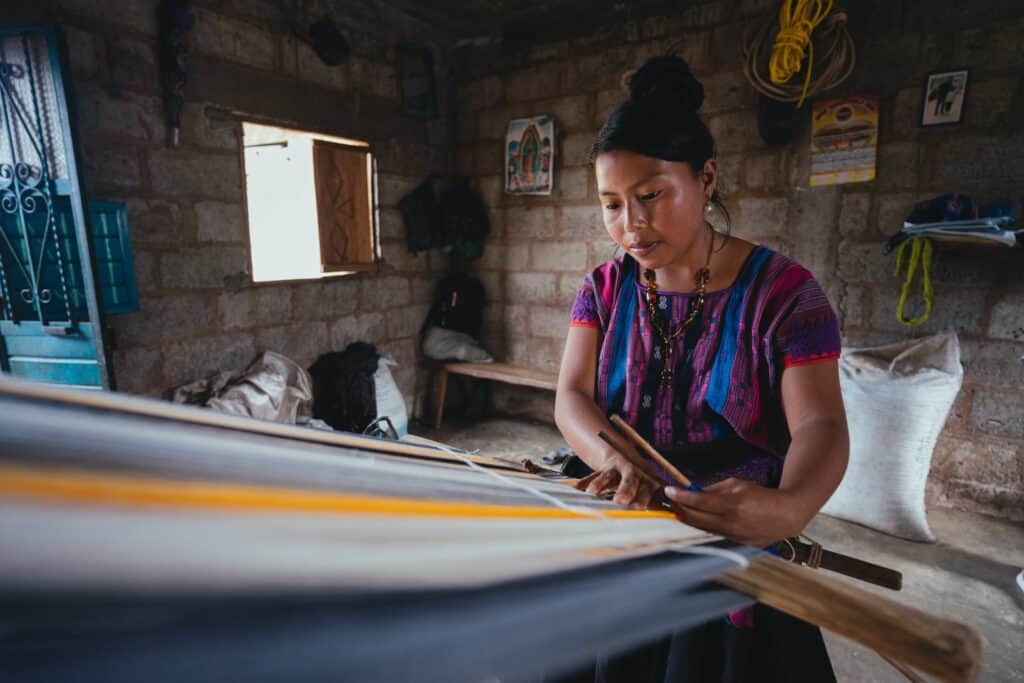
What are shawls made of?
Shawls can be made from a wide range of materials, including silk, cotton, synthetic fibers, viscose, rayon, bamboo, and of course, wool, in all of its endless types: Cashmere, Pashmina, Merino, Yak, Alpaca, Mohair, and many more!
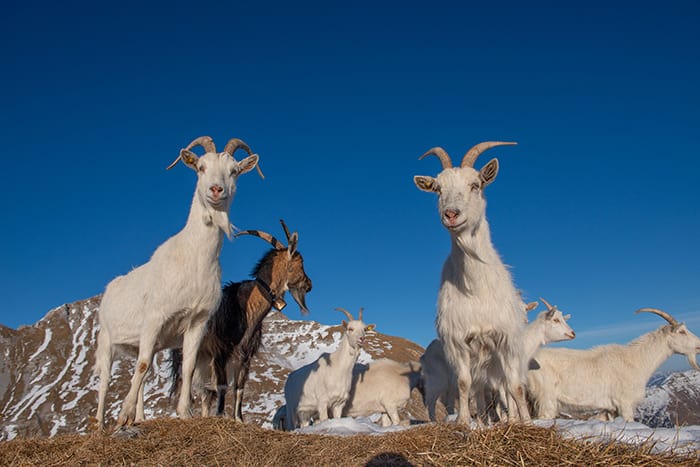
Different Types of Shawls
There are MANY different types of shawls in a wide range of shapes, sizes, and fabrics that can fit so many styles and occasions for both women and men, each with its own unique characteristics and fascinating history.
Here are some of the most popular types of shawls:
Pashmina Shawls
Made from the soft and warm undercoat wool of the Capra Hircus goat, these shawls are renowned for their luxurious feel, fine texture, lightness, and warmth. Pashmina shawls are made 100% by hand, from spunning the fiber into yarn, and all the way to the weaving process, which is done by a traditional handloom. They come in a range of colors and patterns.
Silk Shawls
Silk shawls are made from the delicate fibers of the silkworm. These shawls are popular for their lightweight feel and elegant drape, and they’re perfect for the summer. You can even find ‘Ahimsa silk shawls’ that are made without any harm to the silkworms. However, these are much more rare.
Wool Shawls
The classic winter shawl! Wool shawls are warm, cozy, and perfect for chilly weather; you just need to be aware that some can be quite itchy! So depending on your level of sensitivity, you might want to check it out for yourself before purchasing online (or at least read some reviews).
Popular types of wool shawls include Merino, Yak, Alpaca, Mohair, and many, many more!
Cotton Shawls
Cotton shawls are super-handy garments. They come in a wide range of colors and patterns and can easily be found in beautiful shades.
Cotton shawls can generally be divided into two: Summer and Winter.
Summer cotton shawls are breathable, fun to wear, and perfect as a stylish summer garment. They can also be used as a cover from the sun, to style your hair, or for modesty purposes.
Winter cotton shawls are breathable too, but usually thicker and heavier, and provide more protection during cold-to-freezing days.
Embroidered Shawls
Embroidered shawls are gorgeous! They are decorated with intricate designs and patterns, often using a range of different materials and techniques. They can be made from (pretty much) any type of fabric and are perfect for adding a touch of elegance to any outfit.
Embroidered shawls can be made by hand or machine and are available at a very wide price range.
Lace Shawls
Lace shawls are delicate and feminine and are often worn in white shades as a wedding accessory. They are typically made from fine threads of cotton, silk, or synthetic fibers and feature intricate lace patterns and designs.
Besides the classic lace shawls that are super popular for brides and bridesmaids, there are many other types of lace shawls in all colors that can compliment many women’s outfits with a delicate touch of feminine elegance.
Beaded Shawls
Beaded shawls are decorated with beads, sequins, and other embellishments and are perfect for adding a touch of glamour to any outfit. They come in a wide range of designs.
Shawls (Fascinating) Global History
Shawls have a long and fascinating history, dating back thousands of years, with different cultures and regions developing their own unique styles and techniques for creating them. The earliest shawls were likely made from animal hides and furs and were used for warmth and protection from the elements during the times of the caveman and ever since.
Ancient garment
In ancient Rome, women wore stola, a type of shawl-like garment draped over their tunics. Similarly, in ancient Greece, men and women wore a garment called the himation, which is very similar to a shawl.
In the Middle Ages, shawls were widely worn in Europe as a form of outerwear. They were typically made of wool or silk and decorated with intricate embroidery or weaving. During the 16th and 17th centuries, shawls became popular in India, where they were made from fine wool, pashmina, or silk and embroidered with complex designs. The Kashmir region of India became particularly renowned for its shawls, which were known for their softness and intricate designs.
Shawls also played an important role in the fashion of the Victorian era. In the 19th century, shawls made of cashmere or silk were highly sought after by European and American women. They were imported from India and other parts of Asia and were considered luxury garments. The paisley shawl, which originated in Persia and India, became particularly popular during this time.
Modern times
During the 19th century, shawls became more accessible to the general population due to the development of machine-made textiles. By the early 20th century, the popularity of shawls declined in the West as more modern garments came into fashion. However, the shawl remained an important accessory in certain cultures, particularly in South Asia, where it continued to be worn as a traditional garment.
Today, the shawl has regained popularity as a fashion accessory. Many high-end fashion designers have created their own versions of shawls, incorporating various materials and designs, often with high price tags. However, shawls are widely available in every price range.
Shawls continue to be a popular accessory for both women and men around the world and are worn for both practical and fashionable purposes. The history and cultural significance of shawls continue to be celebrated through traditional practices, modern interpretations, and artistic expressions.
How Shawls are Used in Different Cultures and Regions
The use of shawls varies extensively across different cultures and regions. In some cultures, shawls are worn primarily for warmth and protection from the elements, while in others, they are used as a fashion accessory, a symbol of social status, or a religious garment.
Here are (only) some of the popular cultural uses of shawls:
South Asia
In South Asia, particularly in India, Nepal, Pakistan, and Bangladesh, shawls are an important part of traditional outfits. They are often made from luxurious materials such as silk, wool, or pashmina, and you can also find them with detailed embroideries or woven with stunning designs.
In these cultures, shawls are often given as gifts for special occasions such as weddings or religious festivals, expressing respect, care, and love.
By living in the Kullu region in north India for quite a while, we learned that shawls also provide the local women with something to do during the cold winters when the grass is covered with snow and there’s no use in herding their sheep and goats. In these areas, you often see local villagers sitting and weaving for long hours to create outstanding shawls!
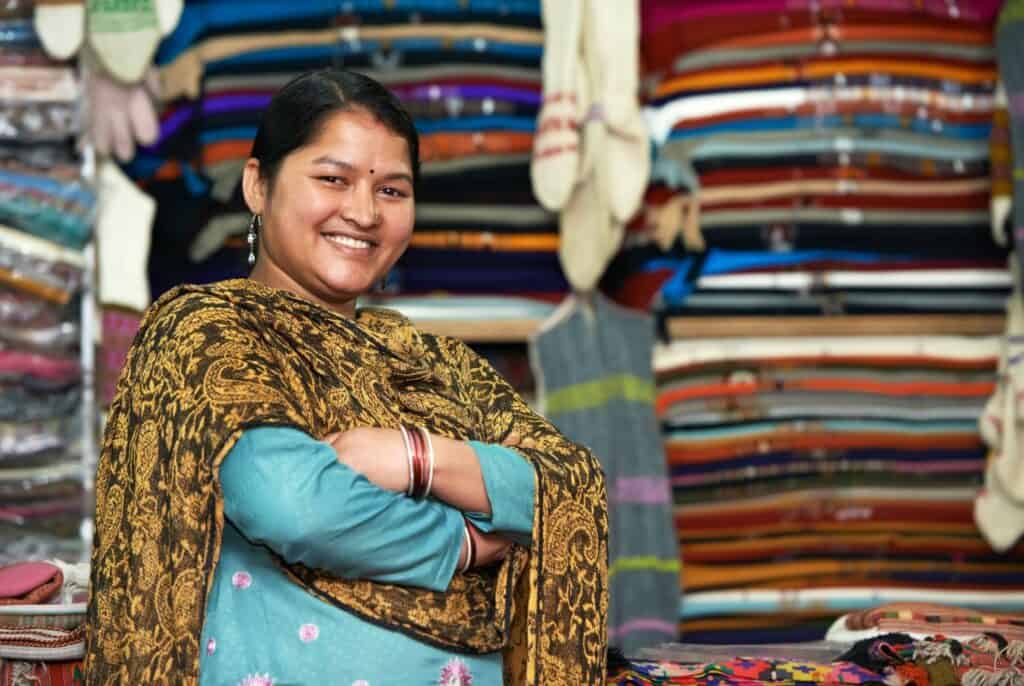
Southeast Asia
In Southeast Asia, the sarong is a type of shawl or wrap that is worn by both men and women. Sarongs are typically made from cotton or silk and are worn as a practical item of clothing, often in hot and humid climates. In Bali, Indonesia, sarongs are an important part of the traditional dress and are worn for ceremonial occasions such as weddings and temple visits.
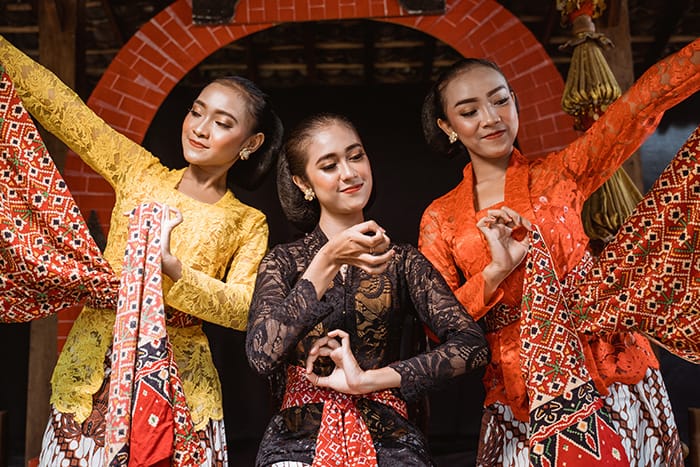
Mexico and Central America
There are many types of shawls used by women and men in Mexico and Central America. There’s the Jorongo, the serape, the famous poncho, the rebozo, the ruana shawl, and MANY more! Mexican women often wear rebozos, a type of shawl made from cotton or silk. Rebozos are worn for both practical and ceremonial purposes and can be used as a head covering, a decorative accessory, a baby carrier, or even for ‘Rebozo massage’ as seen in the picture below!

Judaism
In Judaism, religious men wear a prayer shawl called a ‘Tallit’ every day during the morning prayer and also on special occasions like Yom Kippur or Circumcision. The Tallit is a white rectangle shawl with fringes and black or blue stripes on both sides.

Western culture
In Western cultures, the shawl is often used as a winter fashion accessory and can be worn in a variety of ways, from draped over the shoulders to wrapped around the neck like a scarf.
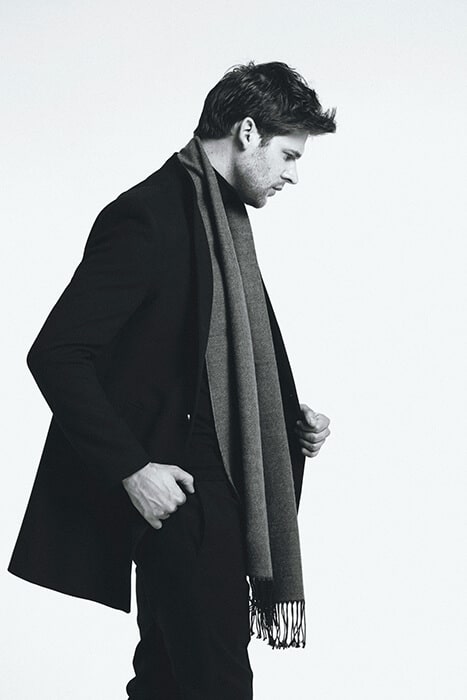
Scotland
In Scotland, the traditional shawl is known as the tartan shawl. These colorful plaid shawls are made from wool and feature a distinctive tartan pattern that represents a particular clan or region. Tartan shawls are often worn as part of traditional Scottish dress for weddings, funerals, and other special occasions, but in recent years they also became a trendy fashion accessory.
Spain
In Spain, shawls hold an integral place in the traditional flamenco attire. Known as the ‘Mantón de Manila’ (or Manila shawl), these intricately embroidered silk shawls hold a special place in the Spanish tradition. They are often decorated with detailed floral patterns and beautiful fringes that add to their charm.
Over time, these shawls have become an iconic symbol of flamenco, Spain’s passionate and fiery dance.
The flamenco shawl is not merely a decorative accessory; it’s part of the dancer’s performance, skillfully used to create dramatic movements and emphasize the rhythm of the dance. It is also commonly used in traditional festivities such as the ‘Feria de Abril’ in Seville, where women wear these beautiful shawls to signify elegance and pride in their cultural heritage. Outside of these contexts, the flamenco shawl has also found its respectful place in modern fashion, as seen in the Dior Cruise 2023.
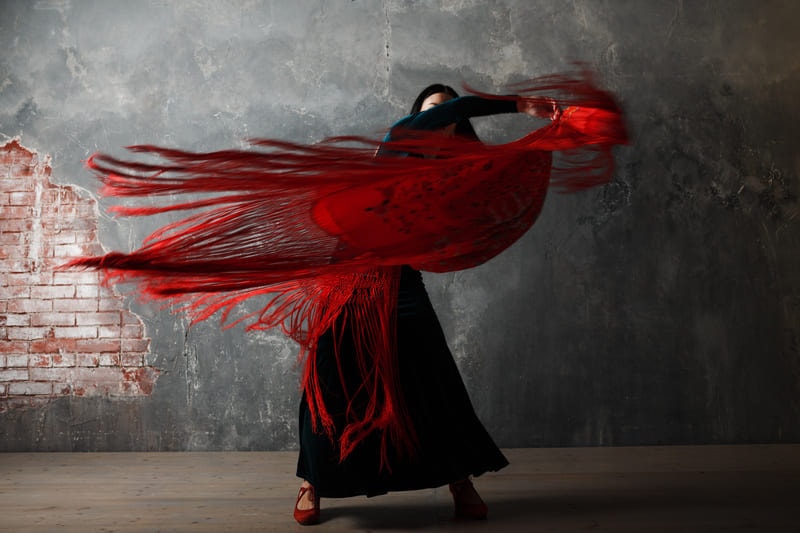
What does a shawl mean as a gift?
In many cultures, giving a shawl as a gift is a symbol of respect, love, or friendship. In South Asian cultures, for example, shawls are often given as a token of respect, gratitude, or hospitality, particularly when welcoming guests into the home.
It’s also common in Tibetian buddhist temples to ask the monks to lay a special scarf on you as a blessing.
What shape is a shawl?
The shape of a shawl can vary depending on the style and purpose of the garment. Traditional shawls are often rectangular or square in shape and can be folded or draped in a variety of ways. However, modern shawls can also be triangular or circular in shape, with different draping options depending on the shape and design of the garment.
Can You Wear a Shawl in Summer?
While shawls are often associated with colder weather, they can also be worn in the summer months as a fashion accessory or as a cover (take the southeast Asian sarong, for example). Lightweight shawls made from materials such as cotton or silk can be draped over the shoulders or wrapped around the neck for a stylish and comfortable summer look. In some cultures, shawls are also worn as a form of modesty, particularly in religious contexts.

Can Men Wear Shawls?
Oh yes! While shawls are often associated with women’s fashion, men can also wear shawls as a fashion accessory or as a traditional garment in many cultures around the world (and the same holds true for ponchos too!).
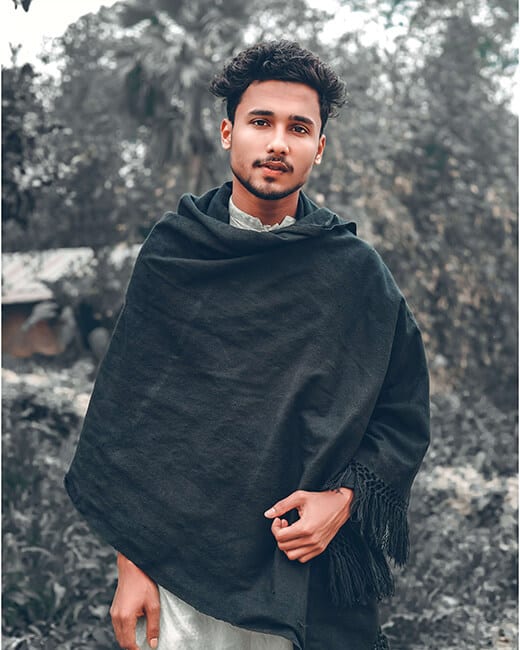
The everlasting shawl
Throughout history, shawls have been valued for their beauty, craftsmanship, and cultural significance. They have been used as status symbols, gifts, and symbols of femininity, among other things. Today, they continue to be popular and cherished, not only for their practical use but also for their fashionable artistic value.
Overall, shawls are not just a piece of clothing but also a part of the rich cultural heritage and history of humanity. They represent the artistry and craftsmanship of various cultures and are a testament to the timeless beauty and functionality of traditional clothing. Whether you are looking to add a shawl to your wardrobe or simply appreciate the beauty of these pieces, the world of shawls has something to offer for everyone!
In conclusion, shawls are versatile, elegant, and functional pieces of clothing that have been around in one form or another since the time of the caveman! They come in a vast variety of materials, shapes, sizes, and styles and can be worn in so many ways to complement any outfit.
Whether you are looking to stay warm, add a touch of elegance, or make a fashion statement, a shawl is a perfect choice. You’re welcome to learn more about these majestic garments on our blog.


